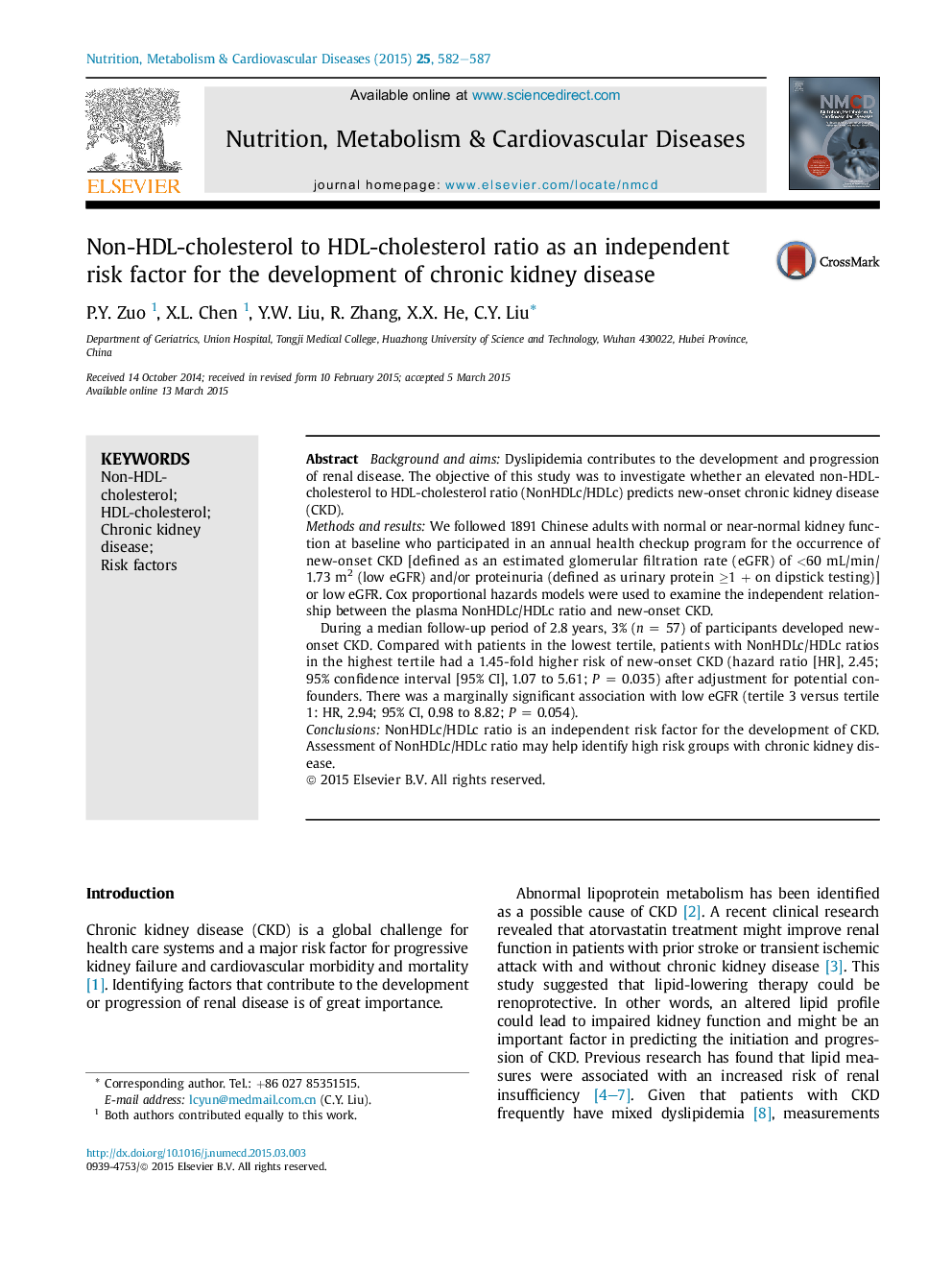| Article ID | Journal | Published Year | Pages | File Type |
|---|---|---|---|---|
| 5996589 | Nutrition, Metabolism and Cardiovascular Diseases | 2015 | 6 Pages |
â¢A total of 3% participants developed new-onset CKD during 2.8 years follow-up.â¢NonHDLc/HDLc is associated with a greater risk of the new-onset CKD.â¢The risk of CKD increased with a greater NonHDLc/HDLc ratio in stratified analysis.â¢The level of nonHDLc is associated with the risk of the new-onset CKD.
Background and aimsDyslipidemia contributes to the development and progression of renal disease. The objective of this study was to investigate whether an elevated non-HDL-cholesterol to HDL-cholesterol ratio (NonHDLc/HDLc) predicts new-onset chronic kidney disease (CKD).Methods and resultsWe followed 1891 Chinese adults with normal or near-normal kidney function at baseline who participated in an annual health checkup program for the occurrence of new-onset CKD [deï¬ned as an estimated glomerular ï¬ltration rate (eGFR) of <60 mL/min/1.73 m2 (low eGFR) and/or proteinuria (deï¬ned as urinary protein â¥1 + on dipstick testing)] or low eGFR. Cox proportional hazards models were used to examine the independent relationship between the plasma NonHDLc/HDLc ratio and new-onset CKD.During a median follow-up period of 2.8 years, 3% (n = 57) of participants developed new-onset CKD. Compared with patients in the lowest tertile, patients with NonHDLc/HDLc ratios in the highest tertile had a 1.45-fold higher risk of new-onset CKD (hazard ratio [HR], 2.45; 95% conï¬dence interval [95% CI], 1.07 to 5.61; P = 0.035) after adjustment for potential confounders. There was a marginally signiï¬cant association with low eGFR (tertile 3 versus tertile 1: HR, 2.94; 95% CI, 0.98 to 8.82; P = 0.054).ConclusionsNonHDLc/HDLc ratio is an independent risk factor for the development of CKD. Assessment of NonHDLc/HDLc ratio may help identify high risk groups with chronic kidney disease.
